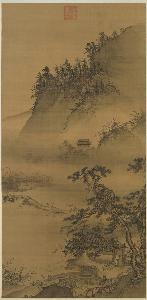Dai Jin
Dai Jin
Place: Qiantang
Born: 1388
Death: 1462
Biography:
Early Life and Career
Dai Jin, a renowned Chinese artist, was born in 1388 and passed away in 1462. He was a leading figure in the early Ming Revival of the Ma-Xia style, also known as the Zhe School, which emerged from the landscape painting traditions of the Southern Song. As a young man, Dai Jin traveled to the capital, Nanjing, with his father, who worked in an official capacity. Although he failed to establish himself in the capital, he returned to Qiantang and resumed his study of painting, likely under the guidance of a local Zhejiang artisan.
Rise to Prominence
Dai Jin's reputation grew significantly around 1425, when he was recommended to the Xuande Emperor. He traveled to Beijing in hopes of securing an academy appointment. However, his plans were thwarted by established painters, particularly Xie Huan, who claimed to detect anti-government bias in Dai's works. One notable example is Dai Jin's painting, Seven Worthies Passing the Barrier (c. 1425-35), which was based on an old tale recounting the flight of seven men from a tumultuous state. This work, along with another piece depicting a fisherman in a red coat, led to Dai Jin's downfall.
Notable Works and Legacy
* Dai Jin's landscapes, showcasing the four seasons, were initially well-received by the Xuande Emperor. * Seven Worthies Passing the Barrier (c. 1425-35), a painting that led to Dai Jin's persecution.
- View Dai Jin's Artworks on Wikioo.org
- Learn more about Dai Jin on Wikipedia
- Explore the Zhe School and its influence on Chinese landscape painting on The Museum Destroyed by Fire (United States)
Conclusion
Despite facing challenges and persecution, Dai Jin's contributions to the Zhe School and Chinese landscape painting remain significant. His works continue to be celebrated for their unique style and innovative techniques. Important: To learn more about Dai Jin and his artworks, visit Dai Jin's page on Wikioo.org.


